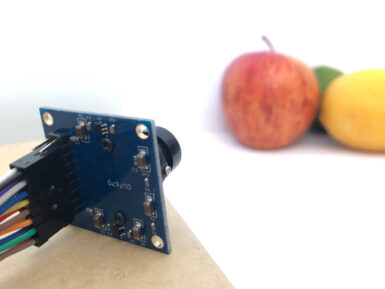
Arduino Certification Bundle: Kit & Exam
Officially certify your knowledge of Arduino in the field of programming and electronics by taking the Arduino Certification exam.
Overview
The Arduino Certification exam + kit bundle includes an Arduino Starter Kit and access to the certification exam.
Developed in consultation with interaction designers and electronic engineering professionals as well as in regards to leading technology curriculum, the Arduino Certification exam assesses skills based upon exercises comprised of practical tasks from the Arduino Starter Kit.
To obtain the certificate, you will be requested to answer 36 questions over a period of 75 minutes.
Purchasing the bundle will grant you the Arduino Starter Kit and an activation code, which can be used to unlock 1 attempt at the Arduino Certification exam.
Purchasing the exam alone costs $30, and grants 1 attempt at the Arduino Certification.
Once the code has been redeemed, you have one year to activate the exam, otherwise the code will become invalid.
The exam is available in English. Spanish, Italian, German and Chinese.
You can try the demo to have a closer look at how the exam will be.
To learn more about the certification process, download now the user guide
To learn more about the Arduino Starter Kit, click here
Tech specs
EXAM SUBJECT AREAS
You will encounter questions that test your knowledge in relation to the following 8 main categories:
- Electricity. Understanding the concepts such as resistance, voltage, power and capacitance,and able to measure and calculate them.
- Reading circuits and schematics. Understanding how electronics are represented visually, and the ability to read and analyze electronic circuits.
- Arduino IDE. Understanding the functionality of the Arduino development environment, serial communication, libraries and errors.
- Arduino Boards. Understanding the constitution and capabilities of an Arduino board and the functions of its different parts.
- Frequency and Duty cycle. Understanding the concepts of Pulse Width Modulation (PWM) and frequency, and being able to calculate duty cycle.
- Electronic components. Understanding how various electronic components such as LEDs, sensors, buttons and motors work, and how to use them in a circuit.
- Programming syntax and semantics. Understanding the building blocks of the Arduino programming language such as functions, arguments, variables and loops.
- Programming logic. Ability to program various electronic components, read, analyze and troubleshoot Arduino code.
For further questions, contact support here.
Resources for Safety and Products
Manufacturer Information
The production information includes the address and related details of the product manufacturer.
Arduino S.r.l.
Via Andrea Appiani, 25
Monza, MB, IT, 20900
https://www.arduino.cc/
Responsible Person in the EU
An EU-based economic operator who ensures the product's compliance with the required regulations.
Arduino S.r.l.
Via Andrea Appiani, 25
Monza, MB, IT, 20900
Phone: +39 0113157477
Email: support@arduino.cc
Get Inspired

If you’re interested in embedded machine learning (TinyML) on the Arduino Nano 33 BLE Sense, you’ll have found a ton of on-board sensors — digital microphone, accelerometer, gyro, magnetometer, light, proximity, temperature, humidity and color — but realized that for vision you need to attach an external camera. In this article, we will show you how to get image data from a low-cost VGA camera module. We’ll be using the Arduino_OVD767x library to make the software side of things simpler. Hardware setup To get started, you will need: Arduino Nano 33 BLE Sense with headersOV7670 CMOS VGA Camera Module 16x female to female jumper wiresA microUSB cable to connect to your Arduino You can of course get a board without headers and solder instead, if that's your preference. The one downside to this setup is that (in module form) there are a lot of jumpers to connect. It’s not hard but you need to take care to connect the right cables at either end. You can use tape to secure the wires once things are done, lest one comes loose. You need to connect the wires as follows: Software setup First, install the Arduino IDE or register for Arduino Create tools. Once you install and open your environment, the camera library is available in the library manager. Install the Arduino IDE or register for Arduino CreateTools > Manage Libraries and search for the OV767 libraryPress the Install button Now, we will use the example sketch to test the cables are connected correctly: Examples > Arduino_OV767X > CameraCaptureRawBytesUncomment (remove the //) from line 48 to display a test pattern Compile and upload to your board Your Arduino is now outputting raw image binary over serial. To view this as an image we’ve included a special application to view the image output from the camera using Processing. Processing is a simple programming environment that was created by graduate students at MIT Media Lab to make








